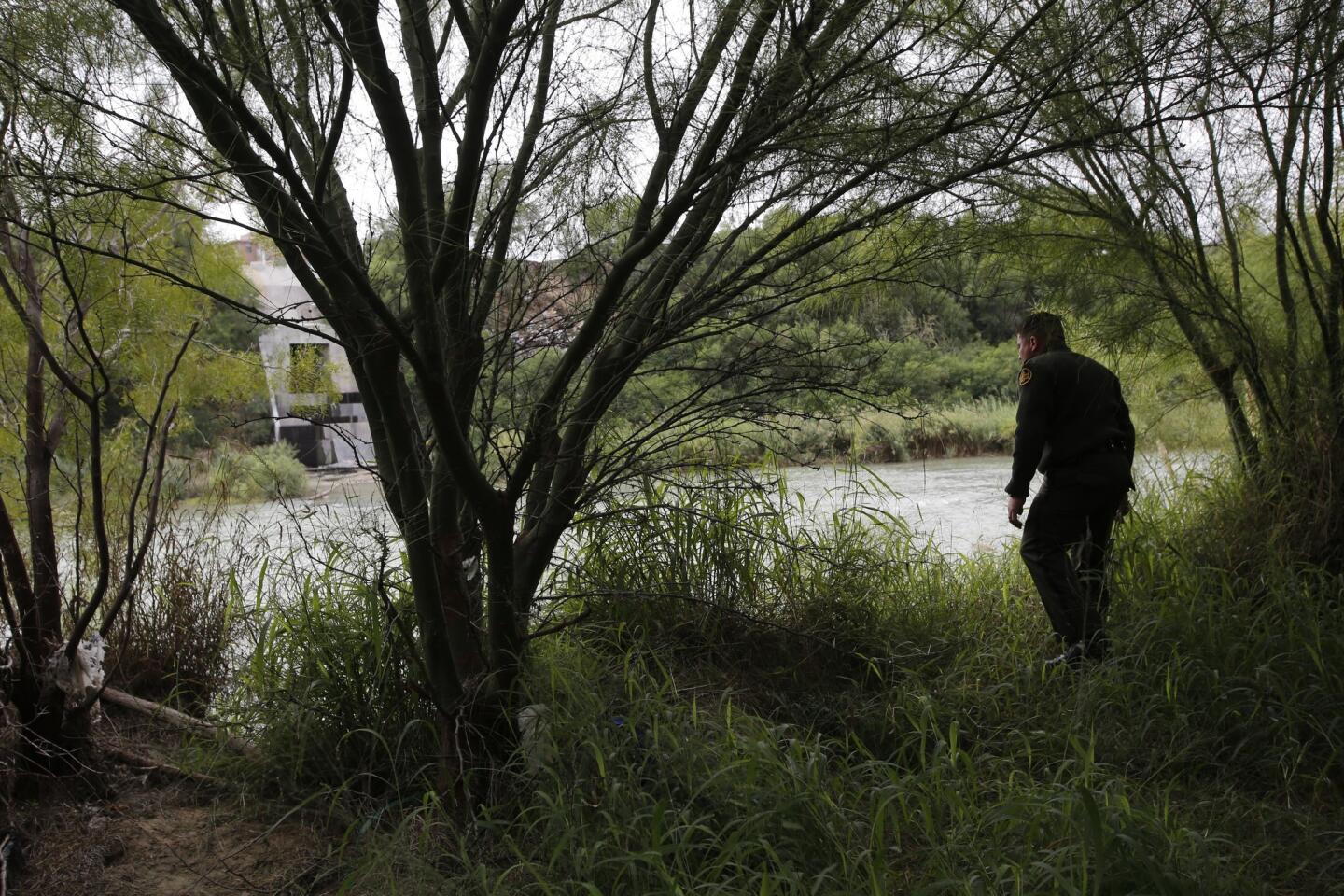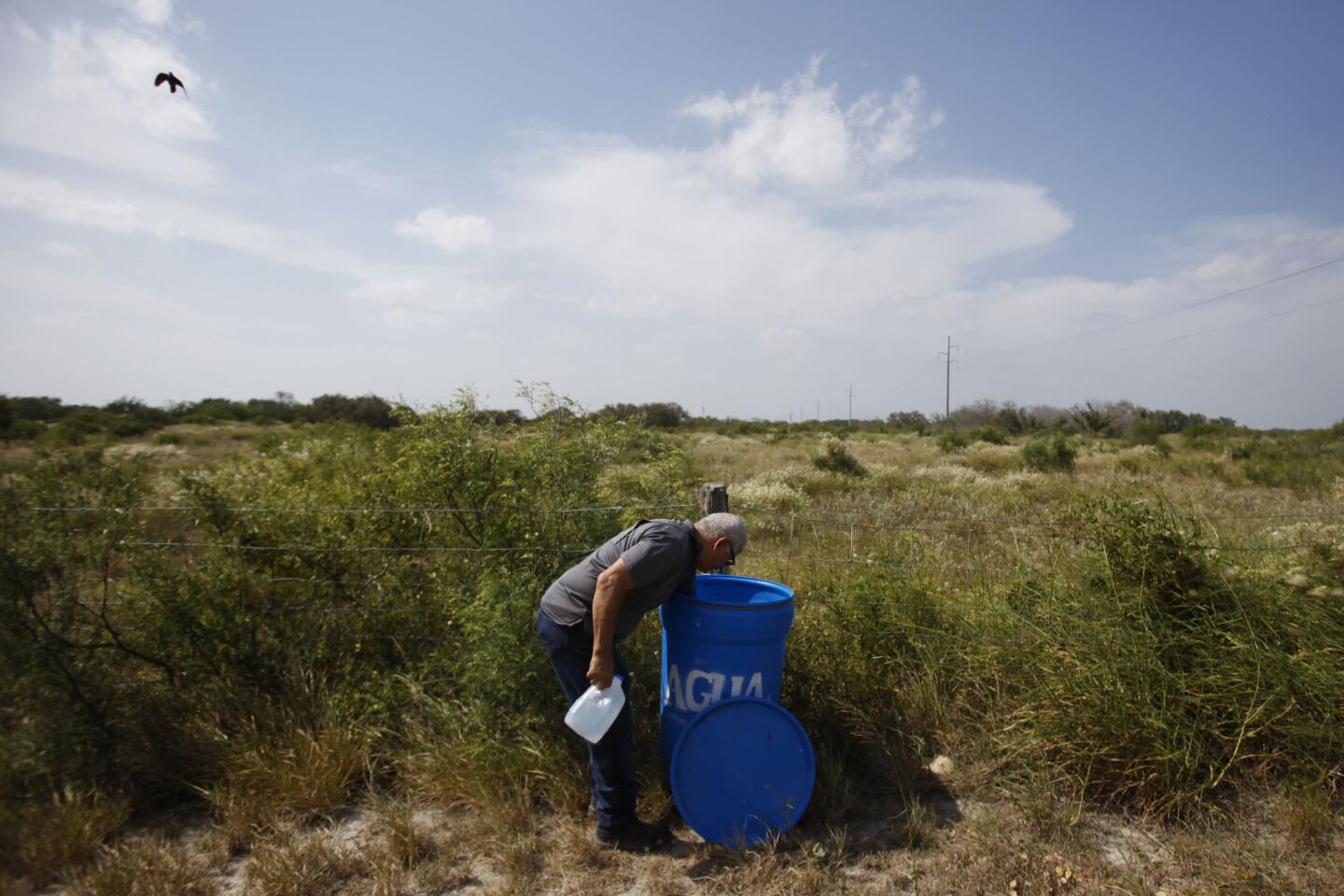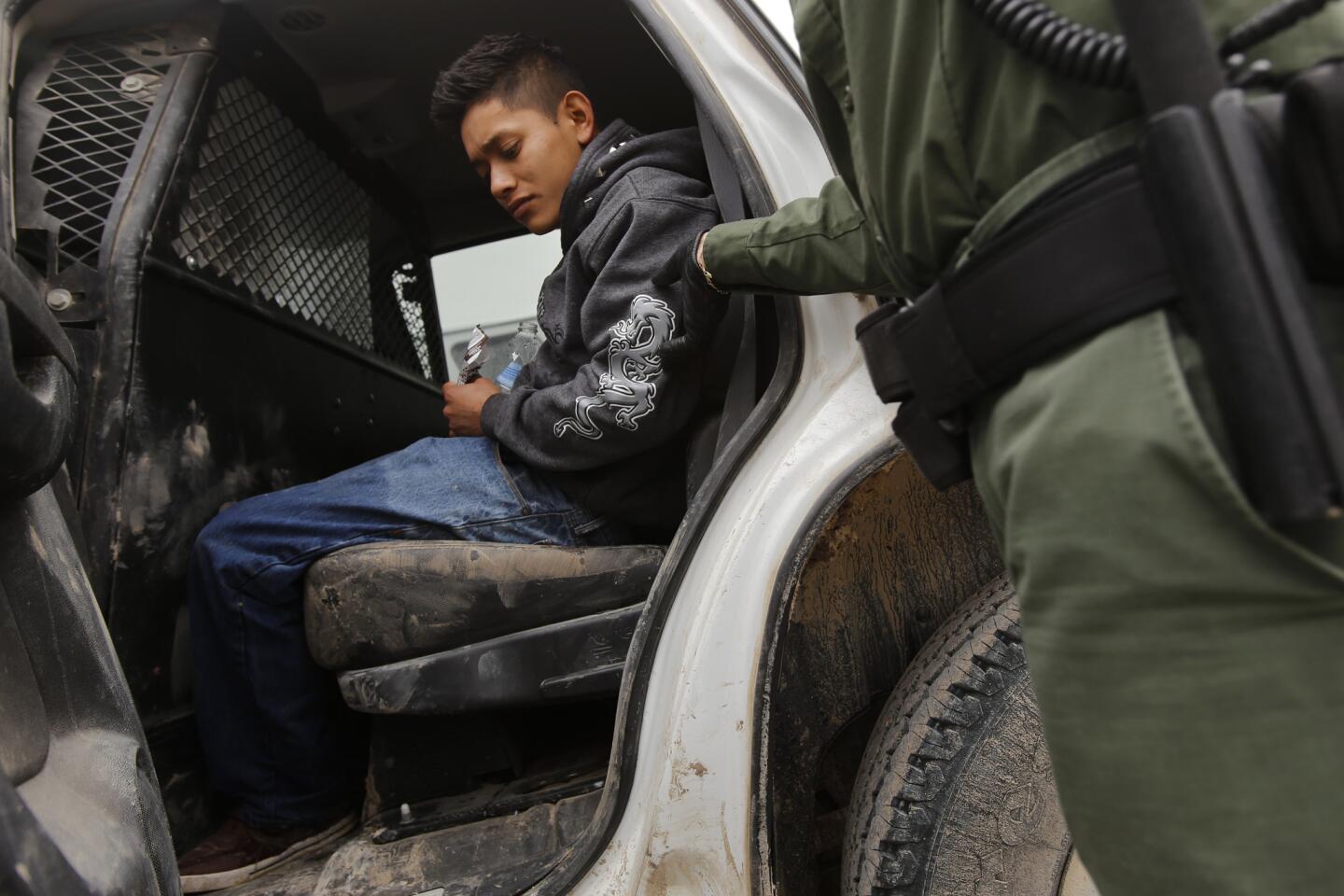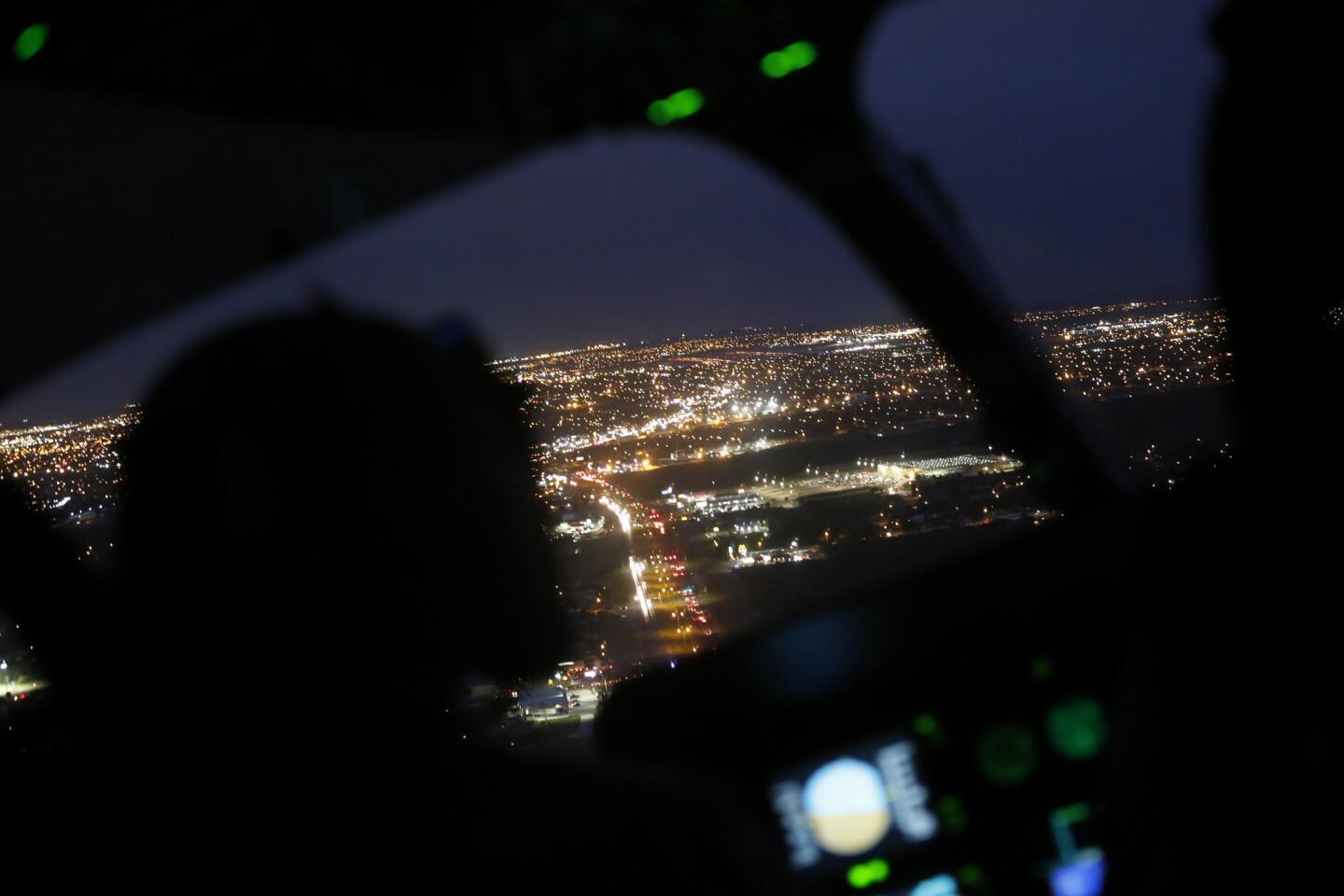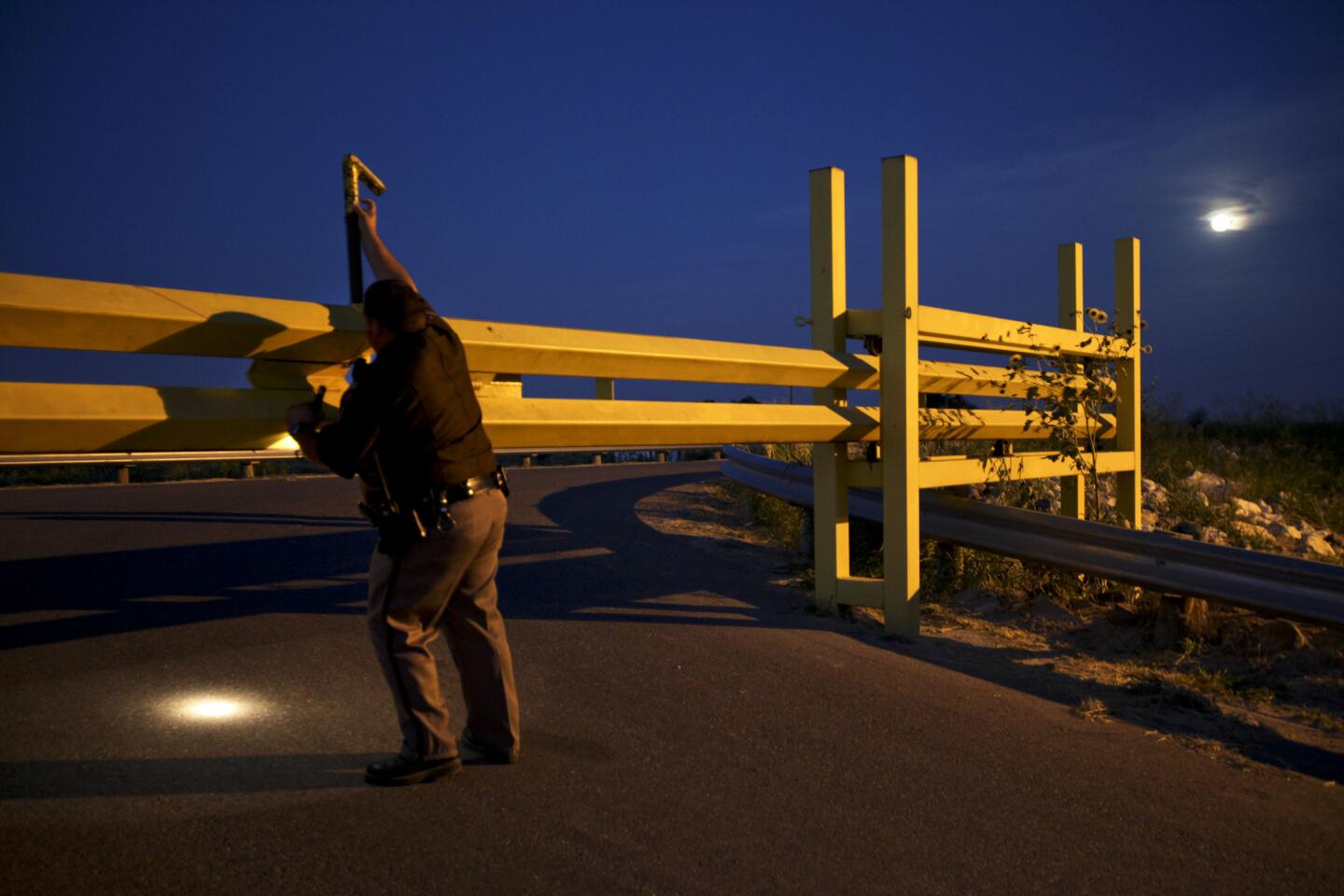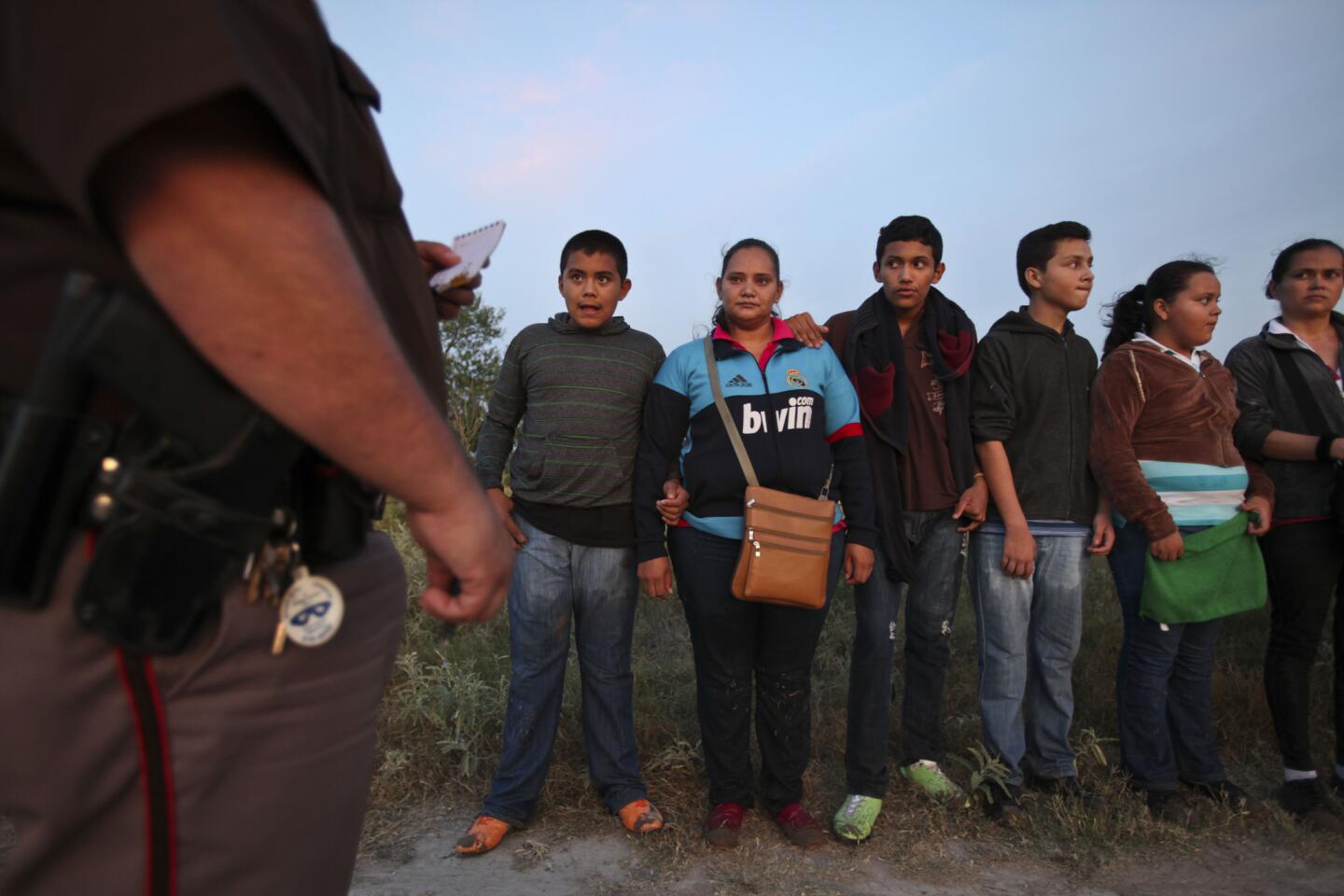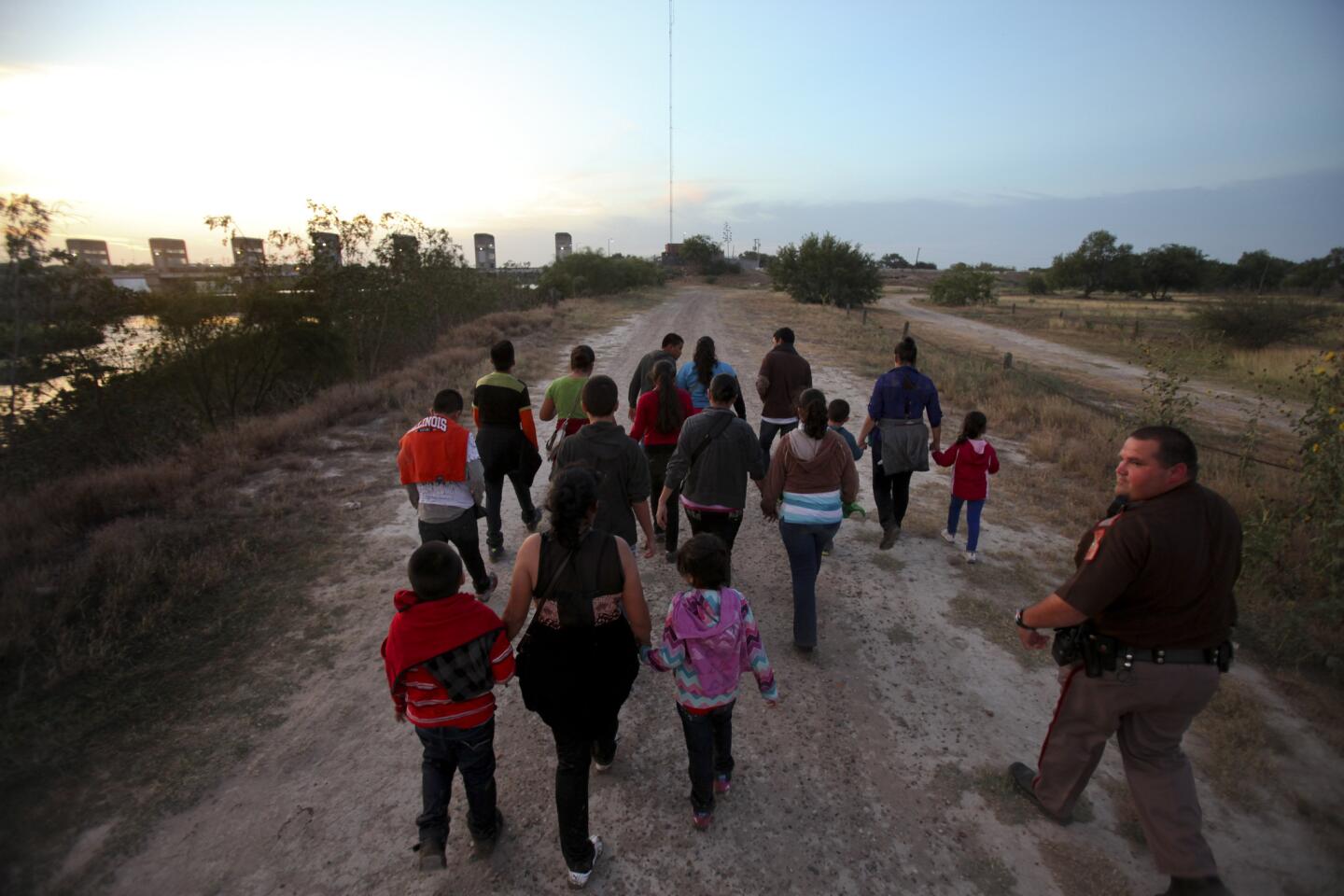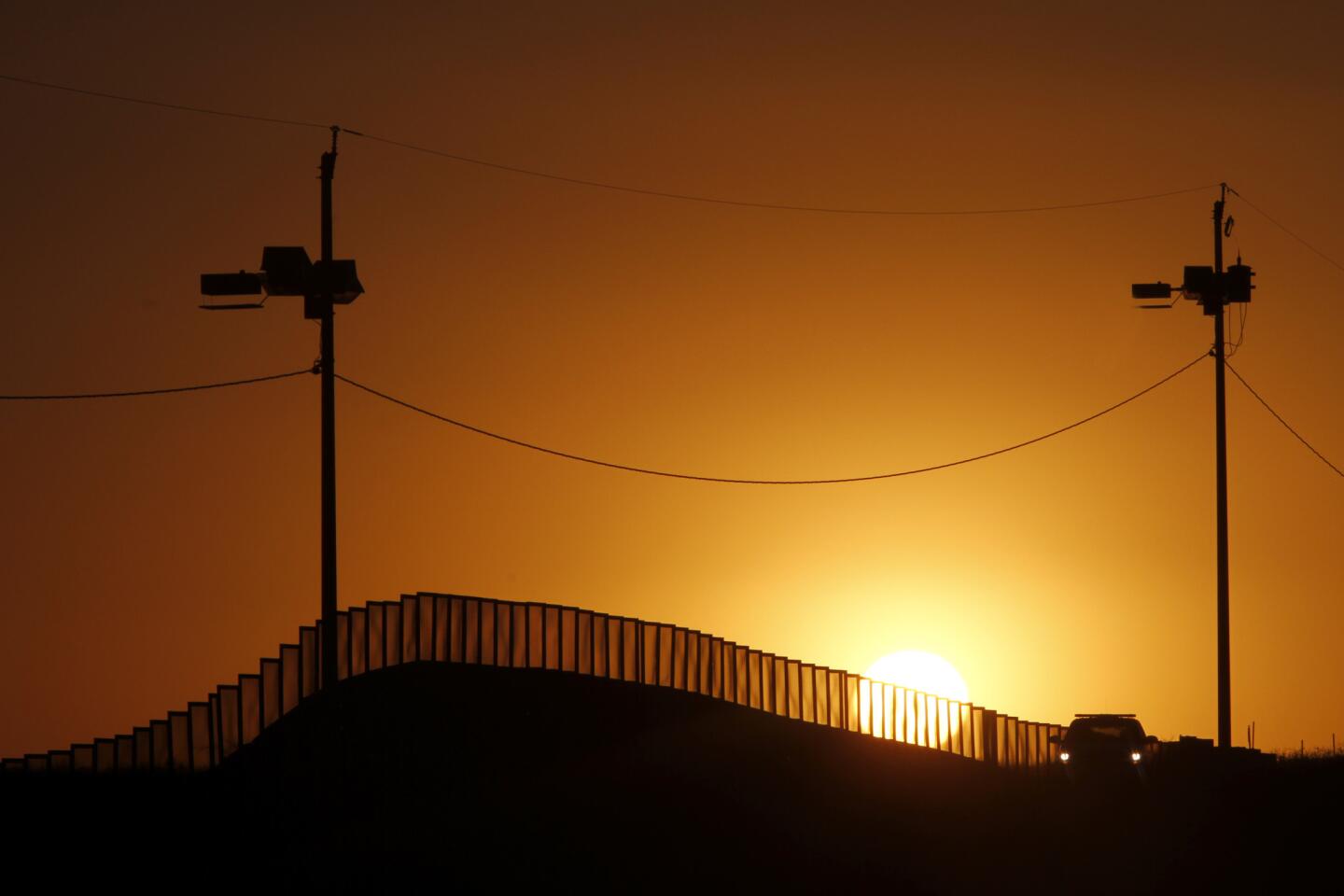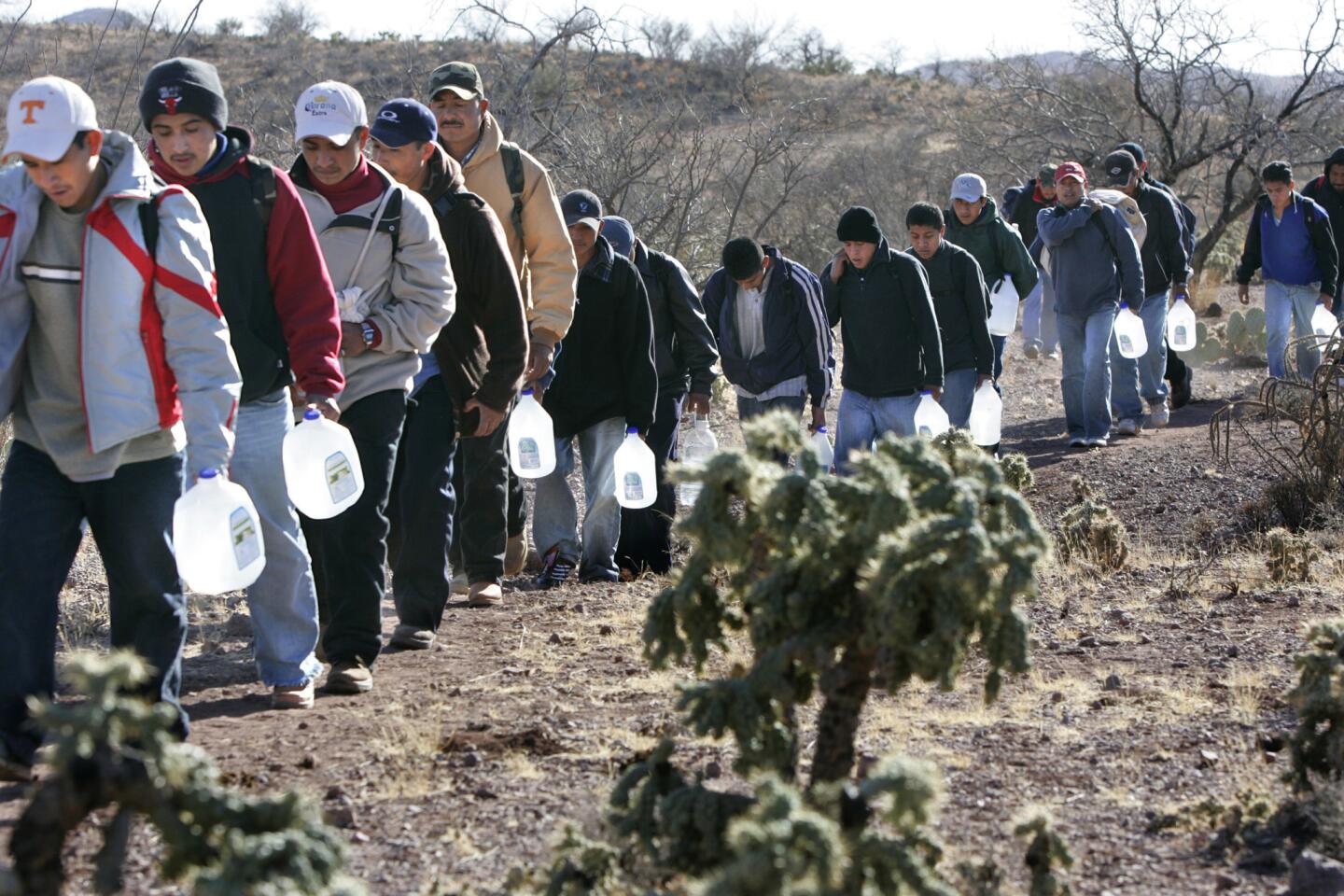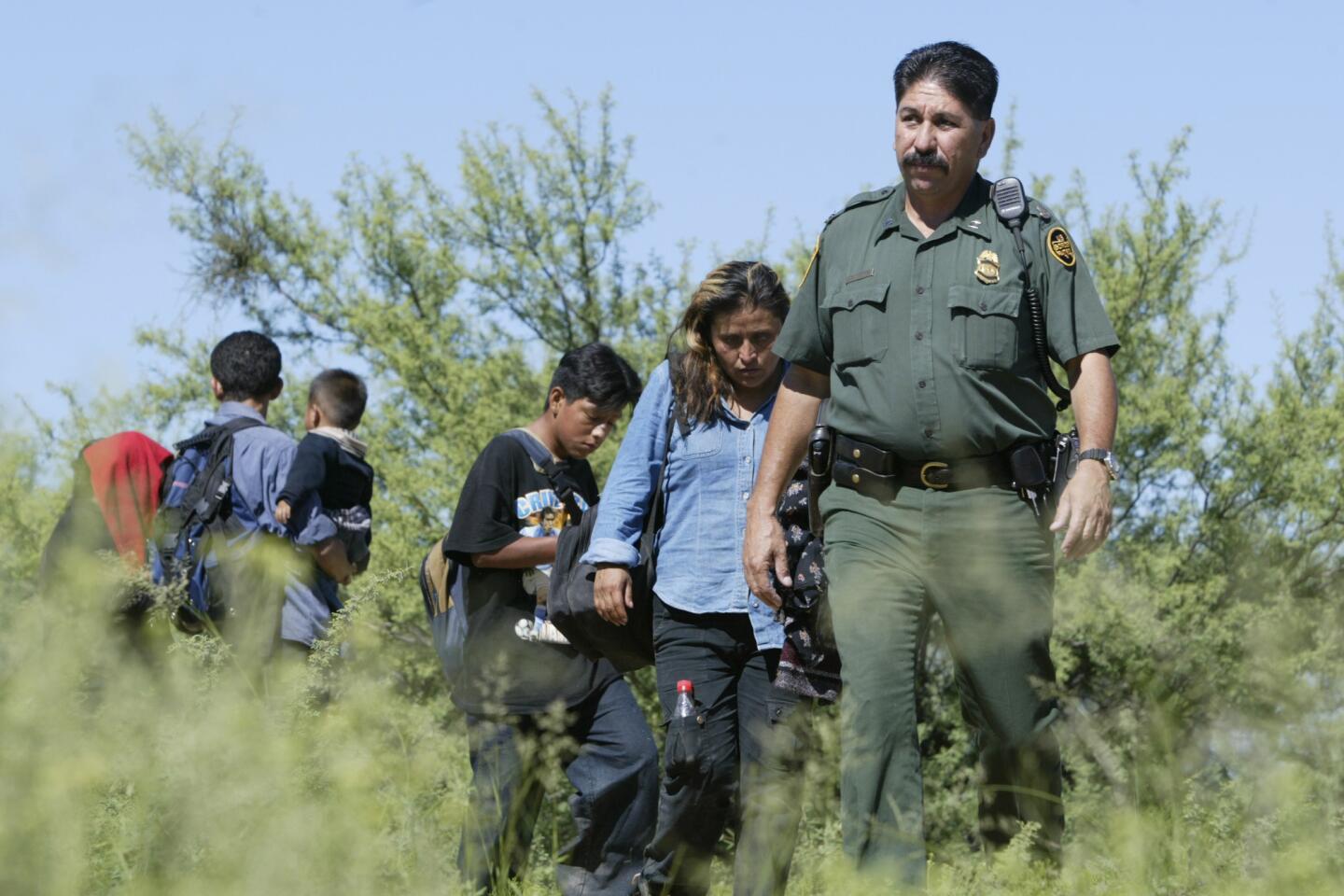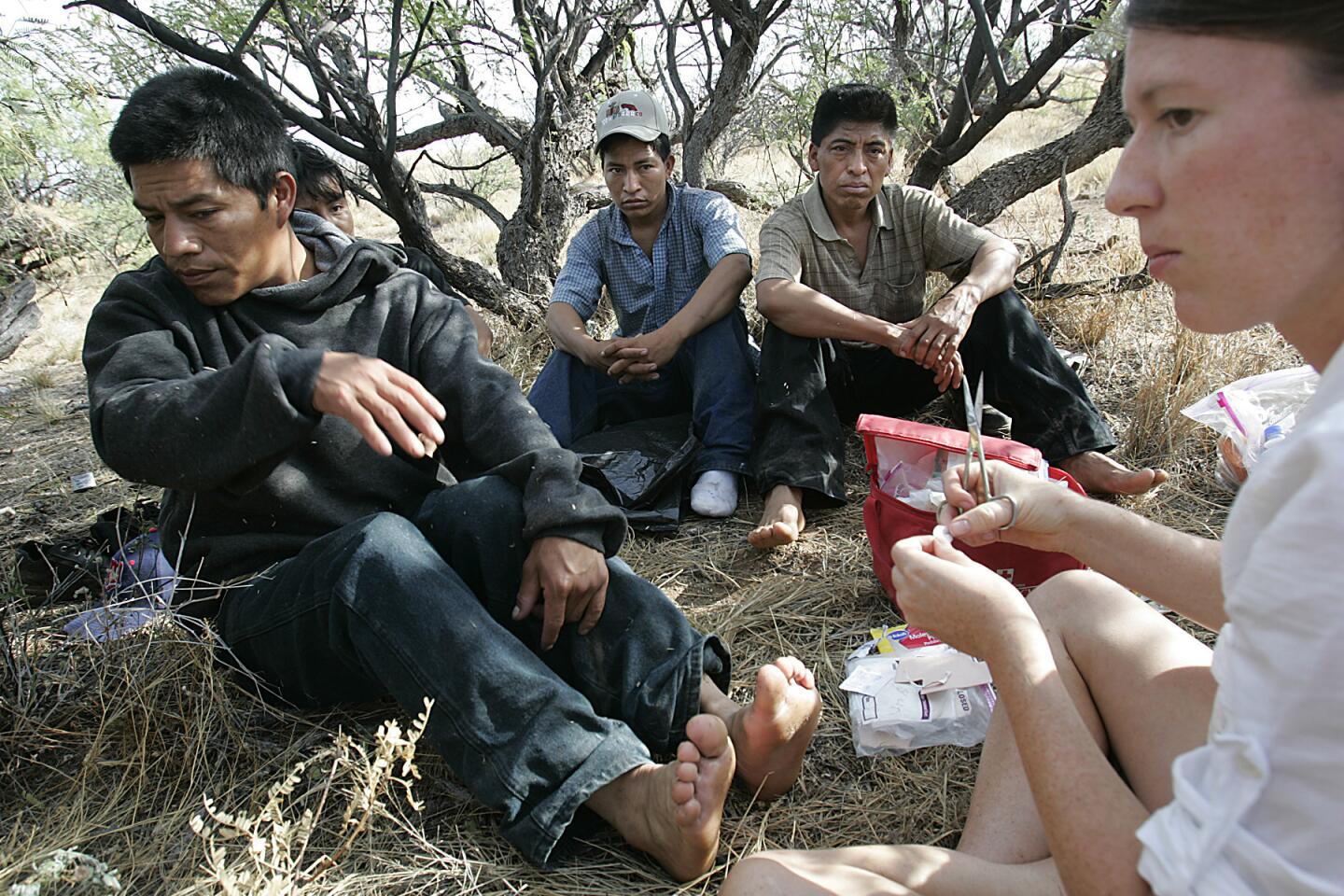Why border crossings are down but deaths are up in brutal Arizona desert
- Share via
Reporting from Tucson — With a significant slowdown in the surge of migrants streaming across the Southwest border, it stands to reason that the number of deaths among those braving the crippling heat of Arizona’s desert frontier with Mexico would also decline.
But it didn’t.
In fact, even more people died attempting the perilous crossing: 117 bodies have been recovered along migration routes in southern Arizona since Jan. 1, compared with 108 bodies during the same period last year.
What happened?
The answer lies in the type of person generally found dead on the U.S.-Mexican border: In 85% of cases, they are Mexican, according to Pima County Medical Examiner Greg Hess.
Most of the migrants who crossed the U.S. border last year were from violence-ridden countries in Central America who often turned themselves in to U.S. border agents and filed asylum petitions that allow them to remain in the U.S. until their cases are adjudicated.
But Mexican migrants tend to have different circumstances. Most who cross the border illegally face immediate arrest and deportation — and as a result, they often choose to evade detection by making their way up the deadly hot byways of the Arizona desert.
“You can’t attribute the number [of bodies found] to how many people tried to cross,” Hess said.
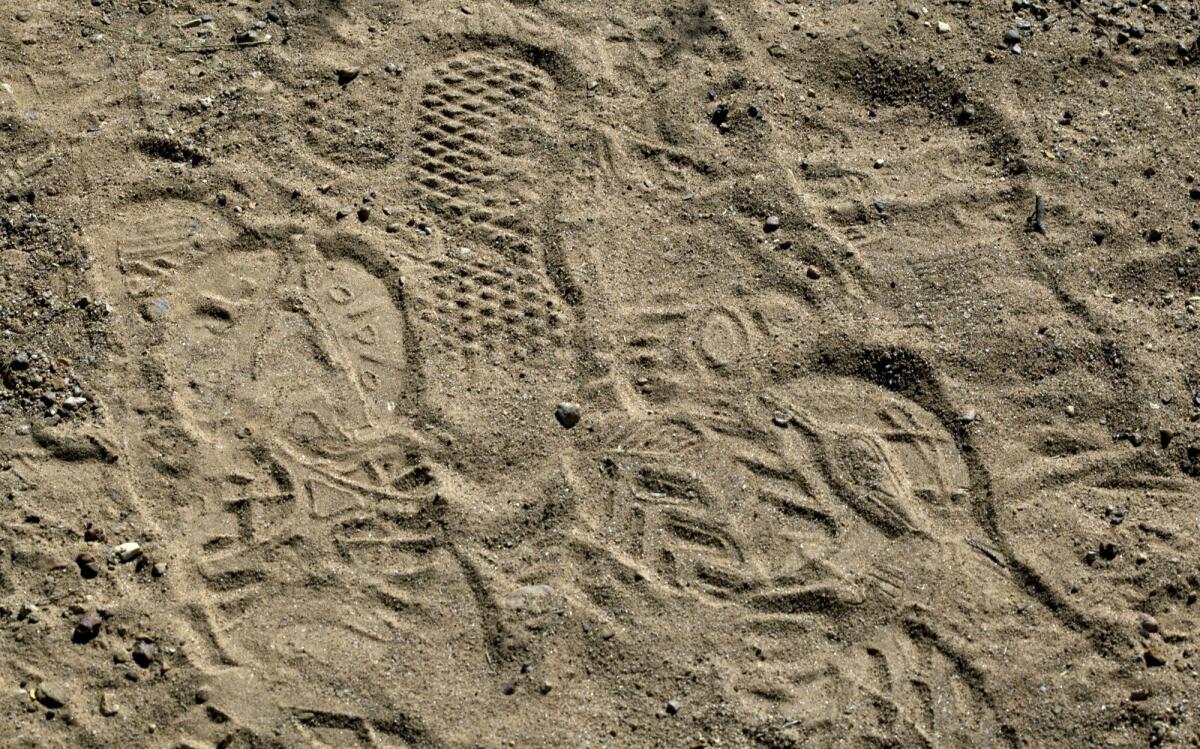
Migrant footprints in the Sonoran Desert in 2012.
Very few of the dead are Central Americans. Eight percent of the bodies found between 2001 and 2014 were those of Guatemalans; Salvadorans accounted for 3% of the bodies found and 2% were Hondurans.
By contrast, many Mexicans — mostly young men — are crossing for economic opportunity, said Juanita Molina, executive director of Tucson-based Humane Borders, a nonprofit that sets up hydration stations in the desert with 300 gallons of water on both sides of the border.
Getting caught by the Border Patrol would be among the worst outcomes, so such migrants take grueling, unforgiving routes through arid country to avoid law enforcement.
Before the construction of fencing along large portions of the border in Arizona — similar to barriers also erected in parts of California and Texas — migrants were quick to simply slip through the border in Nogales, Ariz., Molina said.
Communities along the border, especially those near natural sources of water, were accustomed to border crossers. After Sept. 11, 2001, Border Patrol staffing ramped up and patrols changed and intensified.

These remains, found in 2012, in the forensic anthropology laboratory at the Pima County Medical Examiner’s office in Tucson are believed to belong to a migrant.
The traditional routes became too risky. Now, migrants trying to avoid the Border Patrol take a route through 40 miles of mountains to reach the same destination. More migrants are dying in more remote regions as a result, Molina said.
The Pima County Medical Examiner’s office is responsible for analyzing remains collected along most of the Arizona border, including Santa Cruz and Cochise counties.
The remains of others classified as border crossers who died elsewhere that are taken to the Pima County Medical Examiner’s office can come from as far north as Phoenix, where people who die bearing obvious signs of crossing the border are counted as unidentified border crossers.
Some of the deadliest years included 2013, when 168 bodies were recovered, and 2012, when 156 were found.

These shoes, believed to be from a migrant, were found in the Sonoran Desert in 2012. So far this year, 117 bodies have been found along Arizona’s desert border with Mexico.
Since the office began recording the bodies of border crossers as a distinct category, the fewest number of bodies discovered was in 2001, when the remains of 77 people were found.
The worst year by far since the medical examiner’s office began collecting data was 2010, when 223 bodies were found — 99 in June, July and August alone, overwhelming the office.
As migrants seek riskier routes to avoid capture, even the relatively mild Arizona winter poses risks. Unexpected rain or snow could be deadly, Molina said.
NEWSLETTER: Get the day’s top headlines from Times Editor Davan Maharaj >>
In the formerly easy crossing of Nogales, Humane Borders has papered local stores, shelters and churches with warning posters. “Don’t go!” they urge. “There’s not enough water!”
In addition to the warning is a map. One day’s walk is marked in a small circle. Larger concentric circles show the distance most migrants could cover in two or three days, barely to an interior Border Patrol checkpoint, all of it a desert or mountain.
The map is also littered with red dots, each one representing a migrant death. To the west are the more traditional routes where most migrants die, in the low hills and deserts near highways. To the east is less-explored terrain where far fewer migrants have attempted those routes, so far.
Twitter: @nigelduara
Hoy: Léa esta historia en español
ALSO
New York police officer chasing suspected bike thief is killed in gunfight
Florida police say man killed by officer had a gun, but details remain scarce
Road rage shooting in Albuquerque kills 4-year-old girl in her parents’ car, police say
More to Read
Sign up for Essential California
The most important California stories and recommendations in your inbox every morning.
You may occasionally receive promotional content from the Los Angeles Times.



